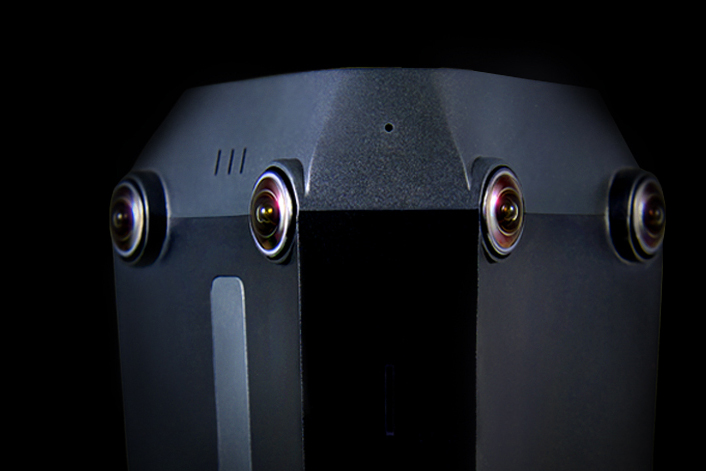
The Hubblo VR’s triangular design stands out among a limited market of sphere-shaped rigs. With two cameras on each of the three points, the camera’s lens imitates how the left and right eyes create a sense of depth, incorporating that into the footage to earn the virtual reality mark often also not-so-accurately given to 360 cameras. The footage is captured and stitched from six 200-degree fisheye lenses, shooting 4K at up to 30 fps.
The design, according to Venture Beat, allows the camera to go beyond just the scrollable 360 images and create depth perception thanks to those camera pairs and stereoscopic output. That information is captured then stitched internally in real time, enabling live broadcasts. A Hubblo app allows viewers to slip their smartphone into a pair of VR goggles to view the footage.
The entire camera unit is not quite as tall as an iPhone and can be used handheld or on a tripod, recording for about an hour on one charge.
Virtual reality rigs with similar capabilities tend to sit at much higher price points with bulkier bodies, like the $45,000 Ozo. Hubblo says the software that stitches the data from all six lenses in real time wasn’t available before the Hubblo. The camera can also live-stream through the built-in Wi-Fi connection, Hubblo says, while many rigs still need a physical connection to a computer for live video.
The Hubblo VR is expected to launch an Indiegogo crowd-funding campaign to support the final manufacturing costs soon — and if that funding goes through, the 3D 360 camera could ship before the first quarter of 2017 comes to a close.
Editors' Recommendations
- The new Insta360 X4 looks like the ultimate action camera
- Nikon meshes 2,000mm zoom capabilities with 4K video in the superzoom P950
- QooCam, the first pocketable 8K 360 camera, is hiding some big features




